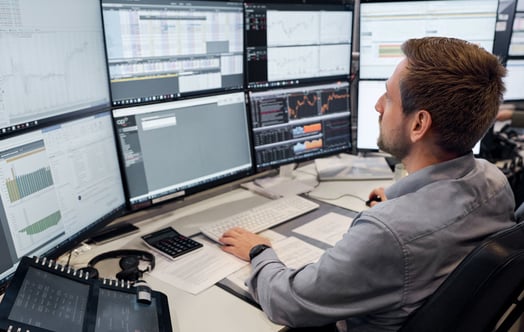
Open letter on upcoming reform of the EU Electricity Market Design
On behalf of some of the major European energy companies we would like to contribute to the debate on the upcoming reform of the EU Electricity Market Design by making proposals and raising awareness on this very complex dossier.
Europe currently faces multiple challenges. The Russian aggression against Ukraine has put our economy and our energy system under unprecedented pressure. European citizens and companies are facing high prices and high inflation. At the same time, the climate crisis requires that the transition to climate neutrality happens as fast as possible. Massive investments in renewable and low-carbon electricity and technology are therefore needed more than ever.
The U.S. Inflation Reduction Act with its very favorable conditions for green investments represents a huge challenge for the competitiveness of the EU’s industry. The European answer should be fast, robust and with a strong focus on enabling framework conditions for renewable and low-carbon electricity investments and energy efficiency. The Electricity Market Design reform is a great opportunity to create the conditions to foster those investments while delivering significant benefits for European consumers and industries.
The upcoming Commission legislative proposal to reform the EU´s Electricity Market Design must contribute to the above-mentioned objective, by enhancing the customer contracting framework, guaranteeing investor confidence to ensure the necessary investments in renewable and low-carbon technologies, maintaining adequacy, sector-coupling and security of supply, as well as preserving the benefits that the internal energy market has brought to the European Union.
As the European energy crisis is primarily a supply crisis and not a demand crisis, this reform of the electricity market needs to be handled with caution, as it bears the risk of creating fragmentation of the internal energy market that would negatively impact the economy and the daily lives of people. We therefore would like to raise your attention on the below exposed elements:
- We need to make the current market design future-proof, preserving the necessary long-term investment signals that will protect consumers against price volatility. The reform must be properly assessed, and time is needed to discuss and elaborate a legislative proposal before urging structural corrective measures that would not deliver the expected outcomes.
- Energy consumers should be better shielded from high prices and extreme volatility situations if they opt to do so. This can be achieved through long-term contracts. Incentives for final customers and retailers should be aligned, for example encouraging/incentivizing retailers to sell long-term contracts with an adequate mitigation for contractual breach (e.g. termination fees), while maintaining freedom of contracting and choice of products to respect different needs of domestic and industrial customers.
- As investments in renewables and low-carbon capacity are key, long-term commitments should be incentivized (PPAs, CfDs, CRMs) to de-risk the investments and hedge final customers against price volatility. Those mechanisms have to be voluntary and well designed in order to maintain competition, encourage market liquidity and deliver the right long-term investment signals.
- Regulatory stability and long-term price signals are needed to foster future investments. Any reform effort must focus on setting the right investment signals in the market to ensure the massive renewable and low-carbon investments that the EU needs without any retroactive effect which could lead to significant litigation, as happened with the retroactive changes in the renewables schemes in the past. A renewable and low-carbon energy mix is essential to guarantee energy independence and low electricity prices for the EU.
- Short term markets are the most efficient way to optimize the use of European infrastructure and resources (generation, demand/response, interconnections, etc.). Improving them and increasing market liquidity is a no regret measure. Initiatives that increase market integration must be pursued (flow-based day-ahead market coupling, maximizing cross-border trade, demand response participation in markets) and grids must be built out to match the requirements of the green transition.
- The evolution of the market design should be robust enough to deal with different situations. In the recent years we have learnt from different crises (Covid, Ukraine) that various market situations can occur over a short time period, very high prices (2022) as well as very low prices (2020). The exceptional emergency measures adopted by the Council based on Article 122 should not be confused with structural market reform. The temptation to try to institutionalize these exceptional interventions should be avoided, as the result has been a fragmentation of the European internal market. What we need is a well-designed market that includes the tools to tackle different kind of crisis (very high or very low prices), providing a European solution that guarantees protection to consumers as well as investors’ confidence.
We stand ready to further debate these proposals in an open and constructive dialogue, to ensure a reform of the electricity market which enables consumers to benefit from the roll-out of renewable and low-carbon electricity and provides confidence to investors in meeting decarbonization goals.

Attachment:
Open letter on upcoming reform EU Electricity Market Design - February 2023 (PDF)



